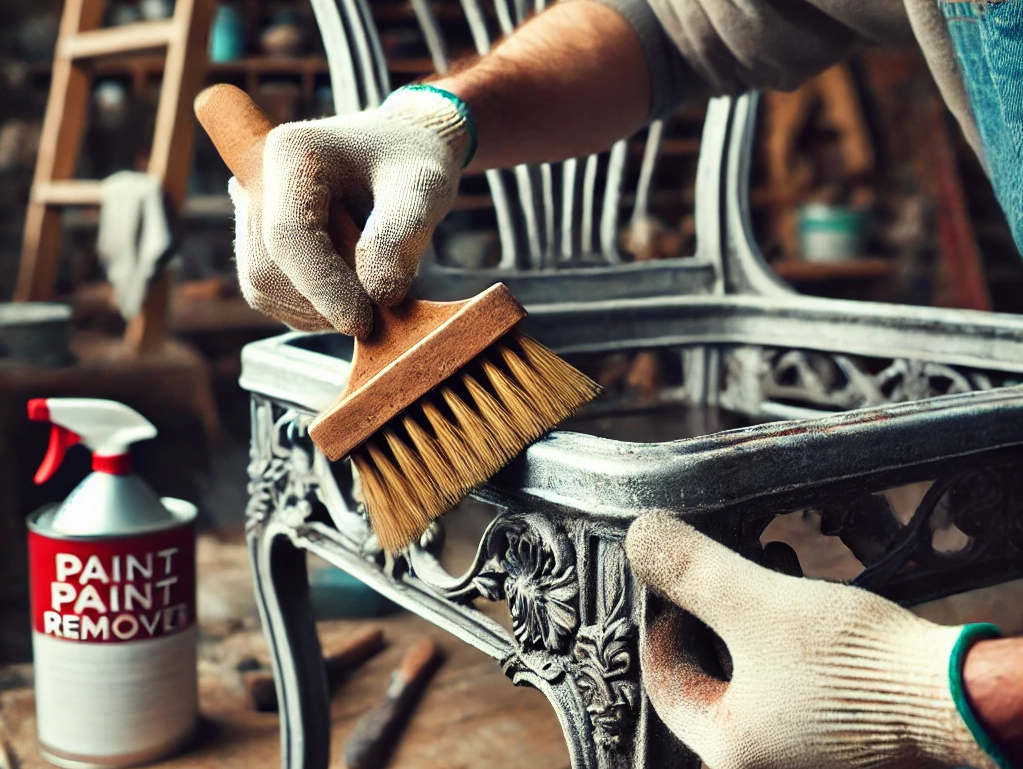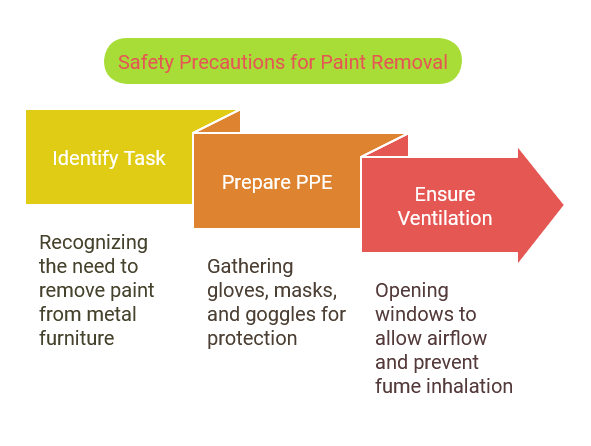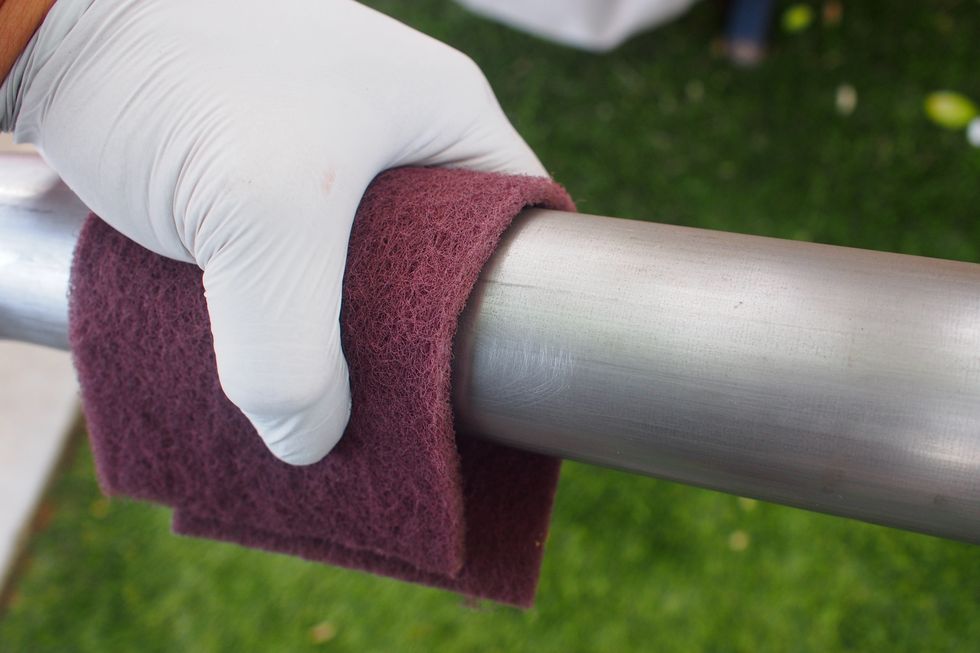
Your metal furniture is more than just an aesthetic fixture. It serves a purpose in your home, so tending to it and sustaining its longevity is essential. In the long run, you’ll save money by dodging costly repairs and getting a new one.
Whatever metal interior piece you inherited from your parents or bought yourself—from bookshelves and bar tools to filing cabinets—recognising the necessity of furniture maintenance ensures its superb usability and preserves its beauty and value.
In this article, we’ll be delving into the different effective methods of removing paint from metal surfaces.
Understanding Metal Furniture
Yes, metal furniture is now a trend in the diverse world of home accessories. It’s really becoming popular, often used in various settings, from offices to living areas.
If you’re wondering why, well, metal decor is durable, versatile and attractive. Each metal has a unique quality that suits everyone’s style and preferences.
Take a look at the primary metals used in furniture manufacturing.
Steel
Steel is a leading metal furniture material. This metal is malleable and can be moulded into numerous designs, and is flexible enough to blend with other materials like wood or glass.
Moreover, steel is noted for its strength and resilience to deterioration. Therefore, when removing paint, you will need chemical paint removers to loosen the metal bond without scratching the smooth surface.
Aluminium
Another popular metal furniture material is aluminium. This metal is lightweight and easy to handle. It can withstand corrosion, but it is not as sturdy as steel and is prone to dents when heavily used, affecting its overall functionality and appearance.
Anyhow, aluminium is a sensible choice for outdoor applications and doesn’t really require aggressive paint removal techniques.
Iron
Iron is a staple metal furniture material. Wrought iron, specifically, is considered to be robust and durable, making it a top option for furniture in outdoor settings, highly exposed to extreme elements.
However, iron is a bit heavy, which can limit its usage in certain areas. Also, it’s prone to corrosion and decay, requiring abrasive techniques to remove rust or paint.
Safety First

Before you get into the heavy business of removing paint on your furniture, safety first.
Personal Protective Equipment (PPE)
Safety is not luck; it comes with preparation.
That said, here’s what you should be garbing before kickstarting that paint removal process.
• Gloves: to protect your hands from harmful chemicals and sharp metal edges.
• Masks: to prevent inhaling harmful chemicals and dust
• Googles: to protect your eyes from chemical sprays and debris
Ventilation
While stripping the paint, especially when you’re using chemical strippers, make certain that you’re working in a well-ventilated place. Adequate airflow is necessary so you don’t breathe in those harmful fumes for long periods and risk your health.
Open the windows to ensure proper ventilation, and wear protective gear to protect yourself.
Methods for Removing Paint from Metal
Painting your metal surfaces is easy; removing the paint, now that’s super hard. You see, paint sticks to metals really well. Therefore, if you need to remove them, it’s going to be a hectic job.
But don’t worry we’re going to help you deal with it with the least effort, just check out these metal paint removal techniques.
Chemical Paint Strippers
This technique is perfect for removing metal paint on delicate and large surfaces. Chemical paint strippers are versatile in breaking the bond between the paint and metal without damaging the surface.
For easy application, follow these steps:
• Apply the chemical stripper using a brush in one direction.
• Allow the paint to bubble and soften.
• Scrape off the metal paint with a metal putty knife or scraper while working on small sections.
Heat Guns
A heat gun is another key paint removal method that softens the paint, making it a lot easier to remove.
With the hot air pushing the temperature high, the paint weakens its hold on the underlying material and lifts away from the surface.
Here’s how to remove the metal paint using a heat gun:
• Hold the gun at a safe distance and move it carefully, back and forth across the surface.
• Wait for the paint to bubble.
• Use a paint scraper or wire brush to clear away the softened paint.
Sanding
Sanding is a traditional way of removing paint from metals. It’s highly ideal for detailed work. You can manually use sandpaper to reach intricate areas or power sanders to cover large surfaces. This way, your removal process is more efficient.
Here are a few tips on selecting the right grit for different stages of paint removal:
• Coarse grit: Use it to remove thick layers of paint.
• Medium grit: Use it for planing or smoothing surfaces after removing the bulk of paint.
• Fine grit: Once most of the paint is removed, use this to smoothen and even out the surface.
• Very fine grit: Use it before you apply the final coat of paint to ensure a really smooth finish.
Abrasive Blasting
Soda or sandblasting is the preferred metal paint removal solution to handle large and heavily coated metal pieces. Sandblasting relies on sand particles to remove paint. Meanwhile, soda blasting leverages baking soda, which is less abrasive than the former.
So, can you do abrasive blasting by yourself?
Yes, but it can be dangerous without the right techniques and tools. Professional services have the practise and knowledge to carry out sandblasting on a larger scale and do intricate designs without causing any damage.
Experts have the resources and are therefore fully equipped to efficiently preserve the integrity of your metal furniture.
Baking Soda Method
Apart from being in the kitchen, baking soda has other uses, like removing paint from metal furniture. It’s a fairly simple process, but highly efficient.
In a bowl, mix baking soda with hot water. This mixture will work its magic in loosening the paint from the metal. You can submerge your smaller items in this solution. After 15 minutes of soaking, you can remove the item and scrape the paint off.
Angle Grinder to Remove Paint
Yes, an angle grinder can be used to remove paint from metal; just attach the appropriate flap disc. The grinder can spin really fast, so you have to be very careful when using it. Wear the right gear for your face and skin.
We recommend going at a lower speed to prevent damage to your surface. You can just slowly increase the grit of the disc once the paint is entirely gone.
Preparing the Surface After Paint Removal

Hold up! Your job isn’t done yet. After paint removal, there are things to do to ensure a smooth finish and enduring results.
Cleaning the Metal
Once the paint is completely stripped, it’s critical to thoroughly polish the metal surface and make sure no residue is left. Why? Any debris or chemical that remains can impact the finish of your paint job.
You can use a mild detergent or solution to clean it. Then, secure a totally moisture-free surface.
Rust Treatment
While you’re removing paint from your metal items, rust may have developed due to exposure to chemicals and moisture.
To treat any rust, you can sand the affected spot and then apply a rust remover to eradicate any lingering rust. Once treated and dried, add additional protection by applying a rust-inhibitive primer to combat future rust formation before coating your paint finish.
Finishing Touches
The final details are what will elevate your new painting job, so you need to pay attention to the following:
Choosing New Paint
When choosing new paint, it’s paramount that you pick a product suitable for metal surfaces, such as enamel, providing stronger adhesion.
For metal fixtures, look for rust-inhibiting paints or oil-based latex paint. These paints work well when combined with primers for extra layers of defence since metal rusts easily.
Remember to always consider the type of metal and its functionality when selecting your paint.
Sealing and Protecting
It’s fundamental to have a protective coat after painting to prevent future damage and boost durability.
A premium sealant serves as a reinforcement to make certain that the metal is guarded against corrosion and the paint remains pristine.
Conclusion
It’s important to learn and understand how removing paint from metal surfaces works. This way, you can spruce up your household fixtures without compromising your resources.
Depending on the type of metal you’re working on, one paint removal technique can be transformational for your metal furniture.
With that being said, we encourage you to choose the right method based on individual needs and furniture type. One paint removal process may be deemed better than the other based on these factors.
In any case, if you’re working on larger-scale metal surfaces, you may want to call in a professional.
A One Korean Painting is a reputable painting service that can deliver quality results in a fast time.

